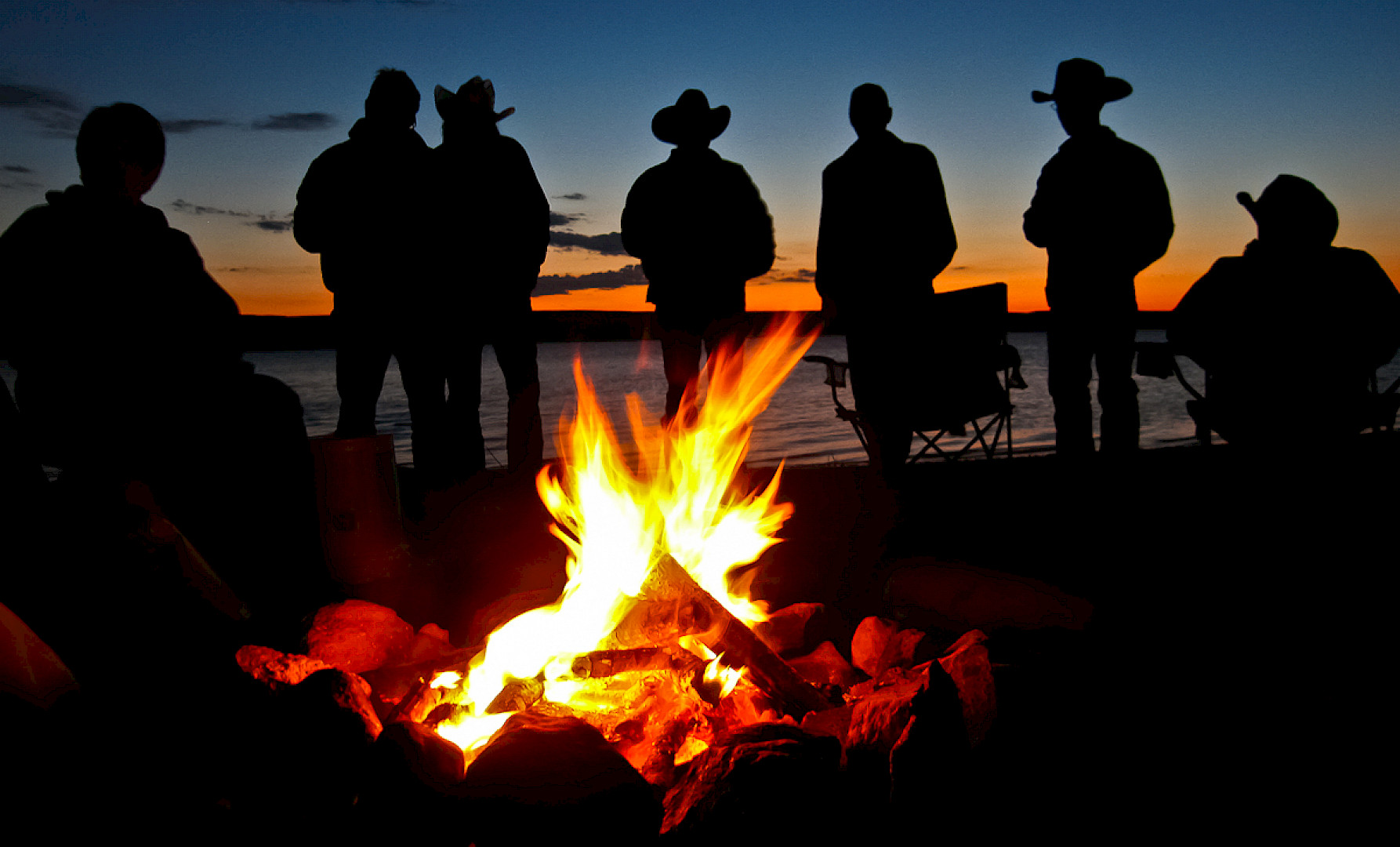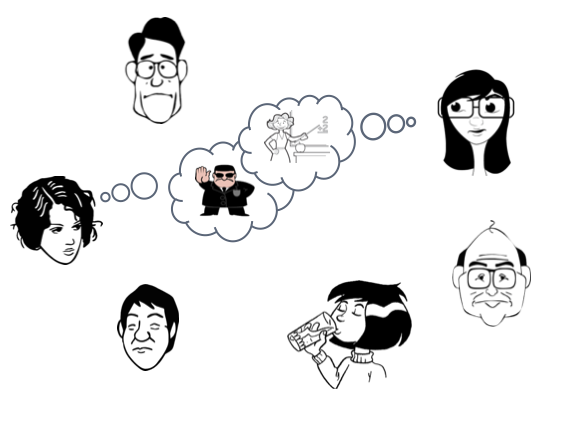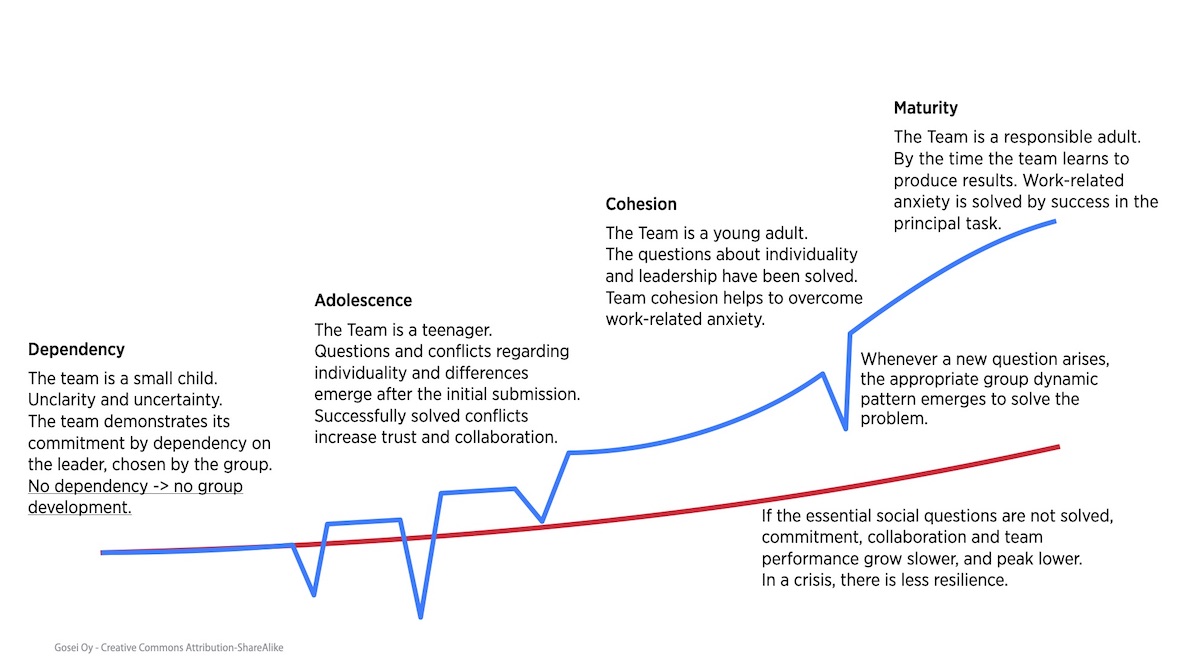Effective Teamwork in Practice
21.4.2021 — Teamwork, great collaboration and performance, is rare. Don't waste your effort in random team building before understanding the internal and external fundamentals.

Imagine that you work with a software development team where people do not collaborate. Is it about individuals, organizational context, group dynamics, or what? What shall you do in practice? Or you lead a Community of Practice. What actions do you take to get people to participate and contribute?
Teamwork has raised high hopes since Tuckman's famous article 1965. In our experience, the promise is rarely fulfilled in real organizations. We see skepticism arguing with unrealistic hype, scarcity of encouraging experience, and a lack of team development skills.
Being a member of a well-working team is a memorable experience. According to Susan Wheelan, 50% of people have never experienced teamwork, and those people might decide about your organization.
Following you have selected points from our experience. For more, please check the references in the end and join our Leading effective teamwork training.
Some misunderstandings about Teamwork
1. The benefits of Teamwork are limited to ideal teams
Teamwork means great performance stemming from great collaboration. Improving teamwork, collaboration, is helpful in many situations: remote teams, larger groups, temporary workgroups, part-time groups, even one workshop or meeting.
Perfect conditions are rare in contemporary organizations. When people have skills to improve teamwork, things will work better also in sub-optimal conditions.
2. Great performance results from improving internal dynamics
Richard Hackman studied teams in Harward for 30 years. According to his research on orchestras, baseball teams, theater ensembles, flight crews, and other teams, 60% of the performance follow from the prework with the organizational context, 30% from how the team is launched, and 10% results from improving the internal dynamics while working.
This reveals the mighty challenge to improve the system, and the responsibility of the executives who set the organizational boundary conditions.
However, even when improving the internal dynamics may have a smaller influence, unresolved social questions may completely ruin the collaboration. Sometimes there is less prework done and the team needs to take more responsibility. In those cases, understanding group dynamics will significantly help to navigate through the first confusion.
3. Teamwork develops by reaching levels (Tuckman's *orming phases)
Tuckman coined the famous team development phases: Forming, Storming, Norming, Performing. He also promised unrealistic benefits. Unfortunately, the model is interesting but too simplistic to be useful for situational leaders, who need to know what to do NOW. Susan Wheelan is the only author that we have found to go deeper.
Teams manifest different group dynamical patterns as burning questions arise. Yes, there is a developmental aspect since the questions typically come up in a natural order. However, the key to good situational leadership lies in understanding the acute question and related group dynamics, not labeling the team "level".
Let's explore this rarely explained topic.
Group dynamics demystified
Before jumping into team development, we need to understand the thing that is developing.
The psychodynamic tradition, starting from Wilfred Bion, provides insight into the seemingly irrational behavior in groups. For every group, there is yet another imaginary person in the room, who represents individuals' projections about the team. Every now and then, group members act on behalf of this imaginary person.
In everyday language, we call that imaginary person "the Group" or "the Team"; "The Team supports", "the Team decides", "the Team learns". In group therapy, people share their pain with the Group, so that no single individual gets all the load.
Each group member projects different qualities and expectations to the Group, based on his or her earlier experiences. This is a rich 1-1 relationship, including unconscious and emotional aspects. It is also a power relation. The Group is an authority, and any member may take the role of the Group and remind others about the norms, sometimes in a surprisingly harsh way.

As tribal animals, we have in-built traits that make collaboration in groups better and more economical. With a long-living team, learning makes "the Team" more consistent. And at the same time, the unconscious forces grow stronger, in good and bad.
The unconscious influence of group dynamics patterns on a member is surprisingly strong. You may remember walking out of a meeting, wondering how people, me included, stopped thinking rationally. I as an individual disagreed, but something prevented me from thinking clearly or acting. The evolutionary wisdom of this behavior is to create alignment and cohesion. Bigger groups that are capable of coordinated action tend to win.
People create this relation and projections also to large groups, organizations, and when working remotely. With no face-to-face communication, the knowledge of group dynamics is gold. The situational leader needs to have educated guesses about what is going on in the dark.
Group development patterns and the developmental life cycle
The important questions tend to emerge in a logical order like in the picture, explaining Tuckman's findings. However, teams and individuals are different. Conditions change, and burning questions may appear at unexpected moments, triggering different dynamics. Tuckman's model explains this as falling back to previous states, which is kind of clumsy.

What can you do as a responsible team member?
If you feel strange, wake up! Look around and observe. Is the work happening or not? How are people relating to the leadership? What is the burning question? Then, if you want to take or support the situational leadership, you may probe with some interventions. There are a handful of patterns that are helpful in both designing teams and reacting to emerging questions.
Further reading:
Susan A. Wheelan: "Creating Effective Teams: A Guide for Members and Leaders", 5th Edition, Sage 2016.
J. Richard Hackmann: "Leading Teams: Setting the Stage for Great Performances", 2002.
J. Richard Hackmann: "Work Redesign", 1980.
J. Richard Hackman: "From causes to conditions in group research", Jan 2012: https://onlinelibrary.wiley.com/doi/10.1002/job.1774
J. Richard Hackman: "Why teams don't work?", https://hbr.org/2009/05/why-teams-dont-work
J. Richard Hackman: "Six Common Misperceptions about Teamwork", Jun 2011: https://hbr.org/2011/06/six-common-misperceptions-abou
J. Richard Hackman: https://hbswk.hbs.edu/archive/leading-teams-setting-the-stage-for-great-performances-the-five-keys-to-successful-teams

